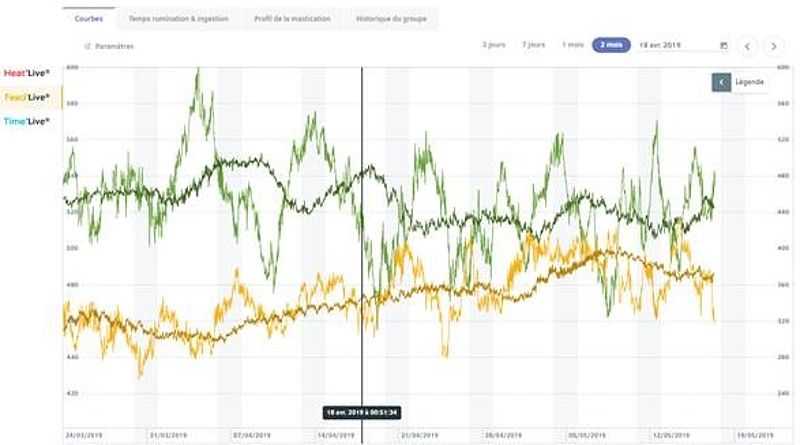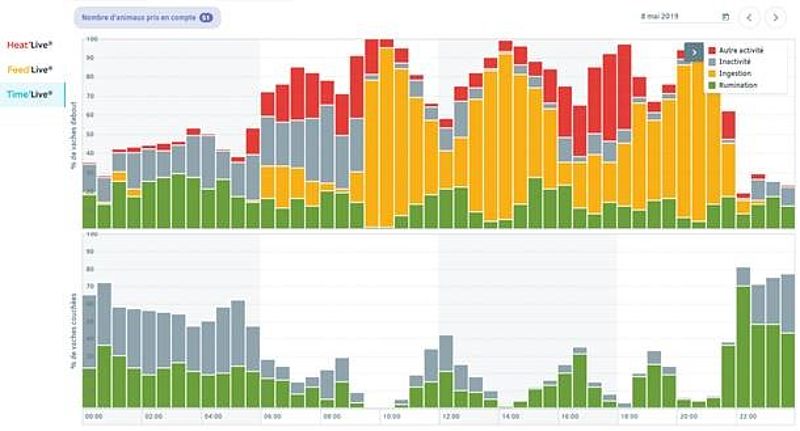Avoid undernourishment at grazing!
In this farm, the cows had a drop in milk and in quality.
Context:

On the curves of the FeedLive you can see that:
Based on these curves, and the imbalance between feed intake and rumination, it can be assumed that cows overgraze and have insufficient availability in the field. Young grass takes time to be ingested but does not allow optimal rumination.
If we look at the cows' exact schedule:

Looking at all the data and field observations, one conclusion was made: there is a lack of availability for grazing.
To compensate for this lack, cows ingest a lot of time during the day (but not in quantity), all the time that grass is available. As the cow is a daytime animal, this behaviour may seem normal. However, at night they do not ingest at all due to lack of availability and make up for the time they spend lying down during the day. This lack of ingestion leads to an imbalance in the rumen.
It was therefore decided with the breeder to increase the availability at the trough a little to compensate for this lack of grass. The rumination curve increased, and performances were recovered.